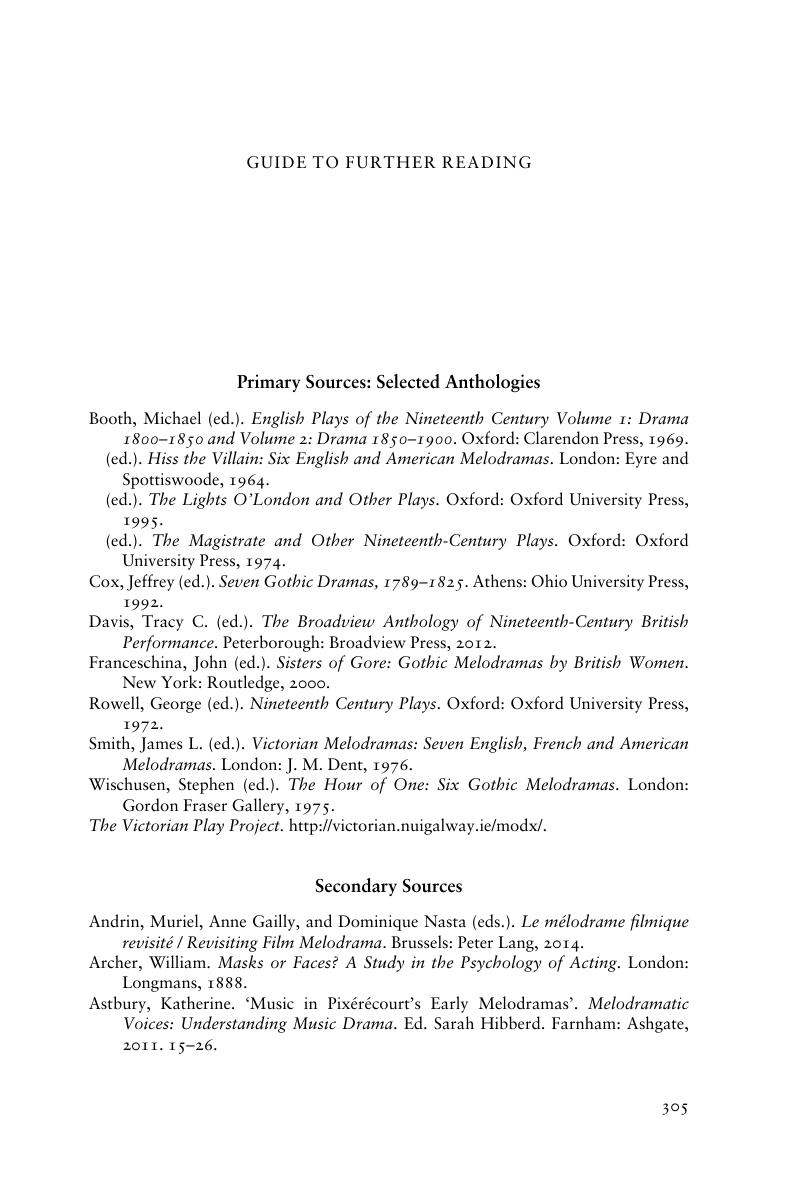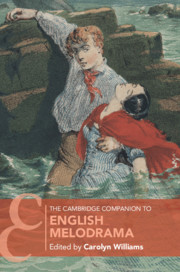Book contents
- The Cambridge Companion to English Melodrama
- The Cambridge Companion to English Melodrama
- Copyright page
- Dedication
- Contents
- Illustrations
- Contributors
- Acknowledgements
- A Note on Citations of Plays
- Chronology
- 1 Introduction
- I Histories of English Melodrama
- II Melodramatic Technique
- III Melodrama and Nineteenth-Century English Culture
- IV Extensions of Melodrama
- Guide to Further Reading
- Index
- Cambridge Companions to …
- References
Guide to Further Reading
Published online by Cambridge University Press: 06 October 2018
- The Cambridge Companion to English Melodrama
- The Cambridge Companion to English Melodrama
- Copyright page
- Dedication
- Contents
- Illustrations
- Contributors
- Acknowledgements
- A Note on Citations of Plays
- Chronology
- 1 Introduction
- I Histories of English Melodrama
- II Melodramatic Technique
- III Melodrama and Nineteenth-Century English Culture
- IV Extensions of Melodrama
- Guide to Further Reading
- Index
- Cambridge Companions to …
- References
Summary

- Type
- Chapter
- Information
- The Cambridge Companion to English Melodrama , pp. 305 - 315Publisher: Cambridge University PressPrint publication year: 2018



